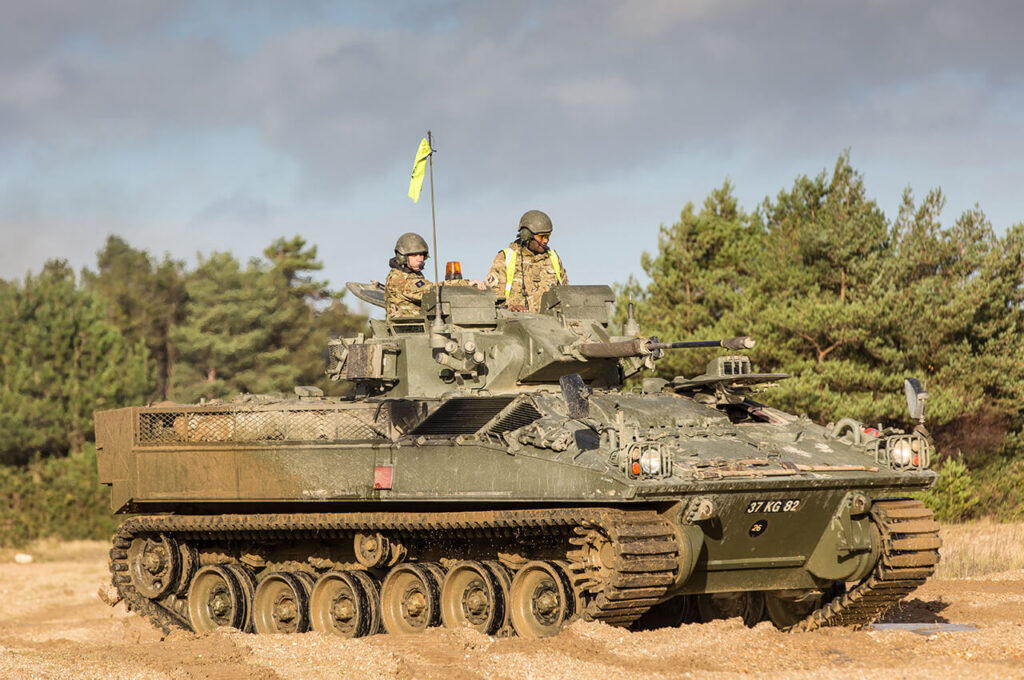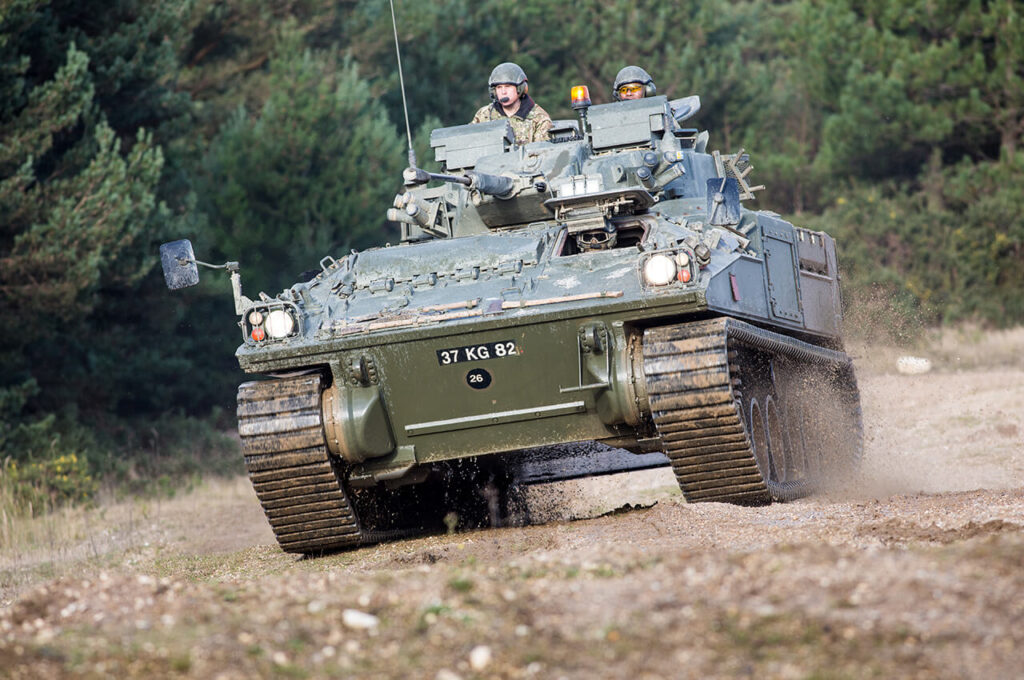4 Sept 17 – 15 Dec 17
Armoured Trials and Development Unit (ATDU) conducted a Private Venture (PV) trial on behalf of Soucy Defense. The trial aim was to build the UK MOD’s confidence in Composite Rubber Track (CRT) technology by validating Soucy’s performance claims, in order to inform future Armoured Vehicle Programme (AVP) capability decisions.
1. Driving, durability and maintenance improvements.
- All crew members stated that there was a noticeable difference in the way the vehicle responded to both steering and braking demands in differing types of terrain. It was also noted that the vehicles acceleration was greatly enhanced in relation to Steel Track (ST).
- CRT shows a noise reduction of between 1.24 dB (A) – 6.24 dB (A) over varying terrain at the driver crew position and an average of 4.02 dB (A) overall.
- The trial was completed after 5000Kms with only minor signs of wear being detected on the Composite Rubber Track (CRT) system, there was also no requirement to change any of the original CRT parts. Removing and replacing the CRT was the only extensive maintenance that was conducted, this took the crew approximately 2 hrs 20 mins in field conditions which was calculated to save on average 415 hrs of manpower.
2. Noise test results.
Noise testing was carried out at 2500km and 5000Km by contractor Nprime. They identified the following:
- CRT resulted in noise reduction of between 3.3 dB (A) – 9 dB (A) over varying terrain at the rear door (dismount) position and an average of 6.56 dB (A) overall.
- CRT shows a noise reduction of between 1.24 dB (A) – 6.24 dB (A) over varying terrain at the driver crew position and an average of 4.02 dB (A) overall.
- CRT shows a noise reduction of between 0.29 dB (A) – 3.36 dB (A) over varying terrain at the commander crew position and an average of 1.92 dB (A) overall.
The noise increase from CRT to ST was also analyzed at the different crew positions and the following findings were recorded:
- Drivers position overall increase – (A) Noise 23.03%
- Commands position overall increase – (A) Noise 107.85%
- Rear crew position overall increase – (A) Noise 135.16%
When combined with the dB reduction associated with the CRT, rear crew members reported greater communication with the remainder of the crew, which improved their Situational Awareness (SA) before leading any dismounted maneuvers.
3. Vibration test results.
- CRT shows a vibration reduction of between 3.7 m.s-2 Root Mean Square (RMS) and 21.6 m.s- 2 RMS with an average of 9.6 m.s-2 RMS over varying terrain.
- It was concluded that CRT gave a reduction in vibration of 59.02 % over varying terrain at the rear crew position (deemed to be worst affected area of vehicle)
4. Life Cycle Costs.
- Fuel readings were taken at the start of each terrain type test and calculated at the end to determine the amount of fuel used during that period. There was a fuel range increase of 19% (road) and 31.9% (cross-country).


The CRT trial has been extremely successful. The trial achieved the aim of completing 5000km on one set of tracks and could possibly have gone well beyond this. Having this track system deliver up to 8000km is realistic, with the caveat that the track was not tested beyond 5,000km. The objective data collected during the trial validates the manufacturer’s claimed benefits including reliability, durability, N&V, automotive performance, much reduced maintenance time and fuel efficiency. Confidence in CRT technology has thus grown significantly, and the trial has identified several possible exploitation opportunities in the current and future UK AFV fleet where CRT should deliver program efficiencies and an enhanced capability to the User. There is evidence that the Noise and Vibration produced by having CRT fitted is significantly, reduced which will have a genuine effect on the health of our soldiers.